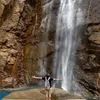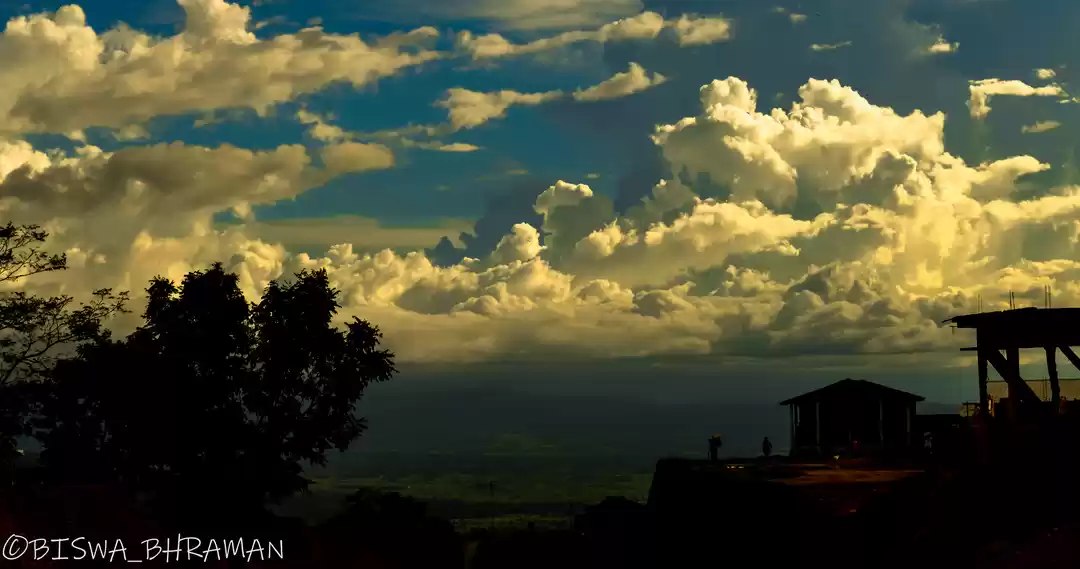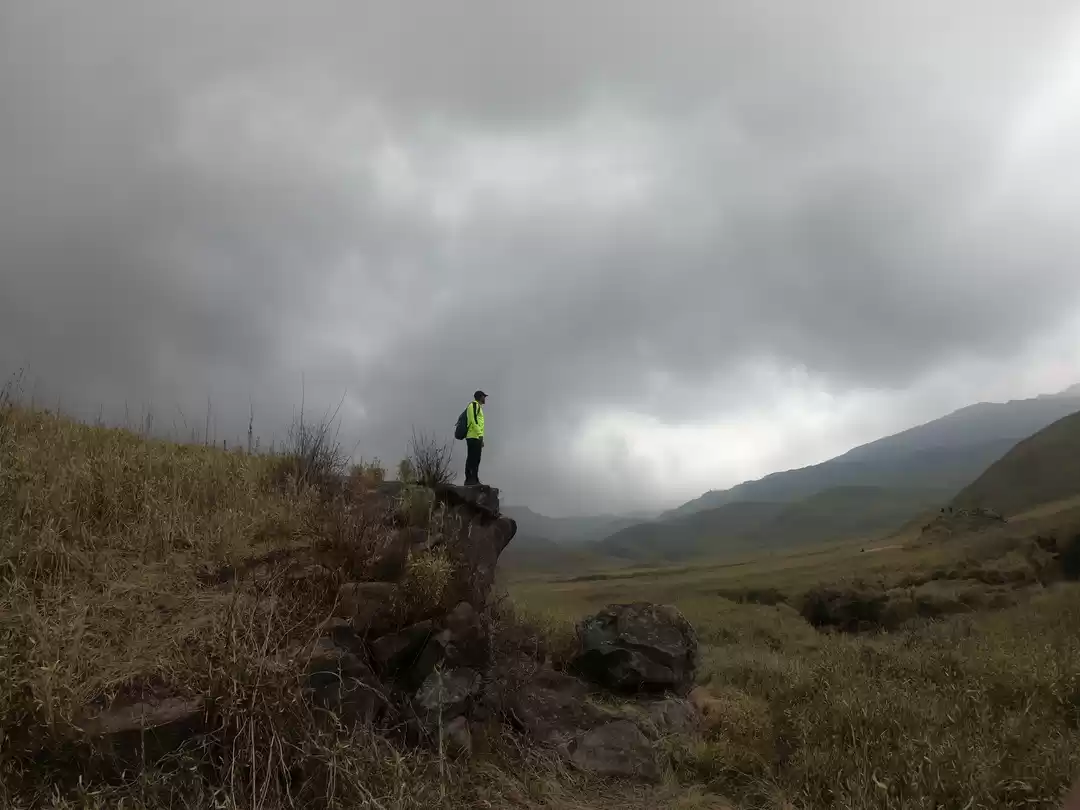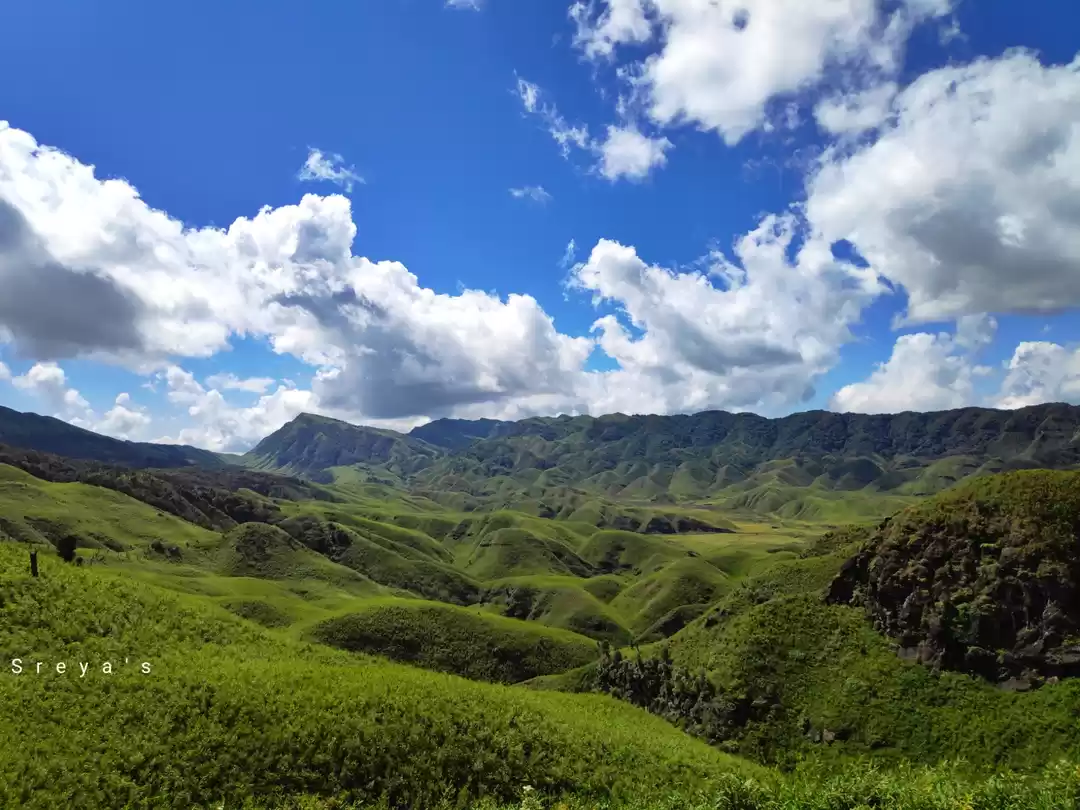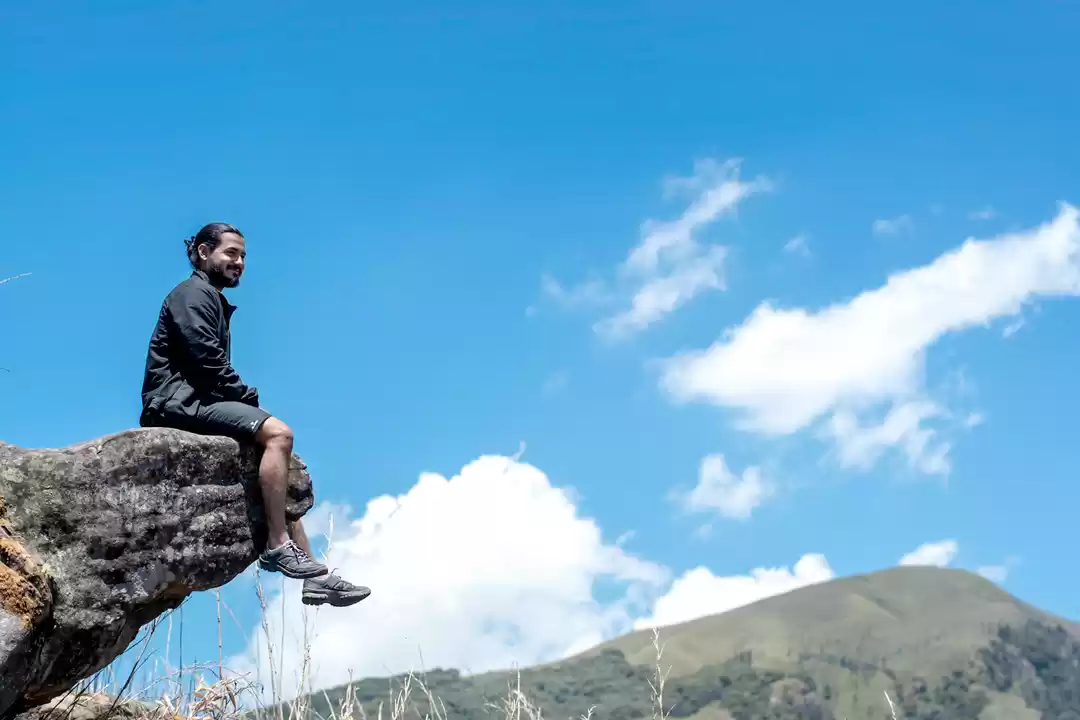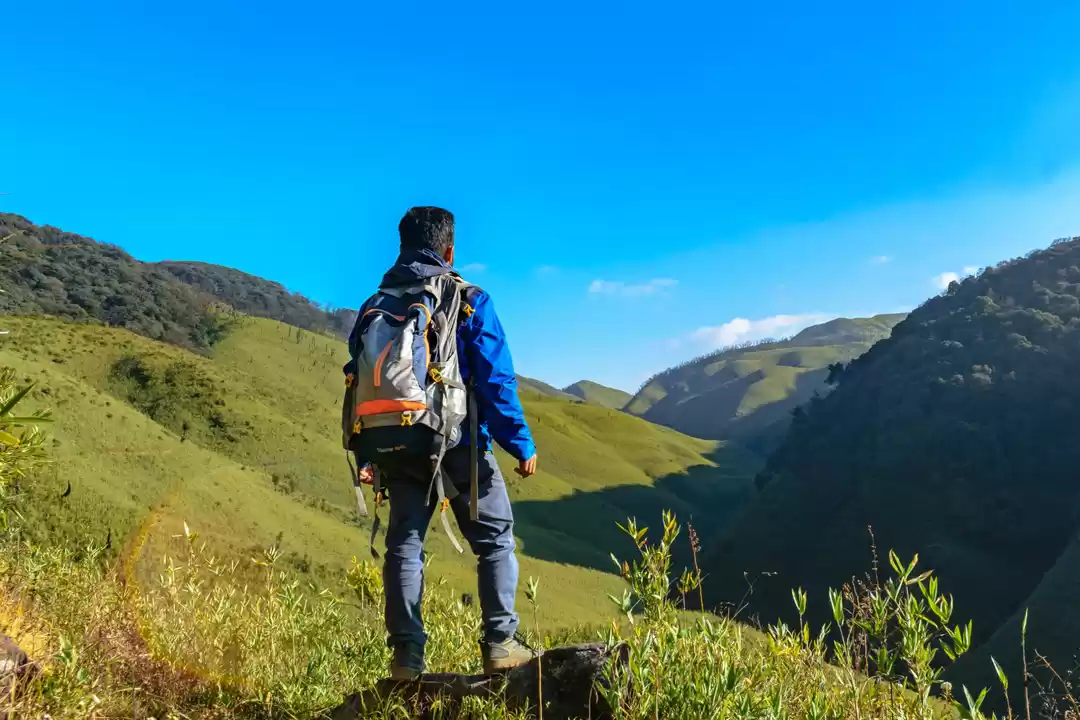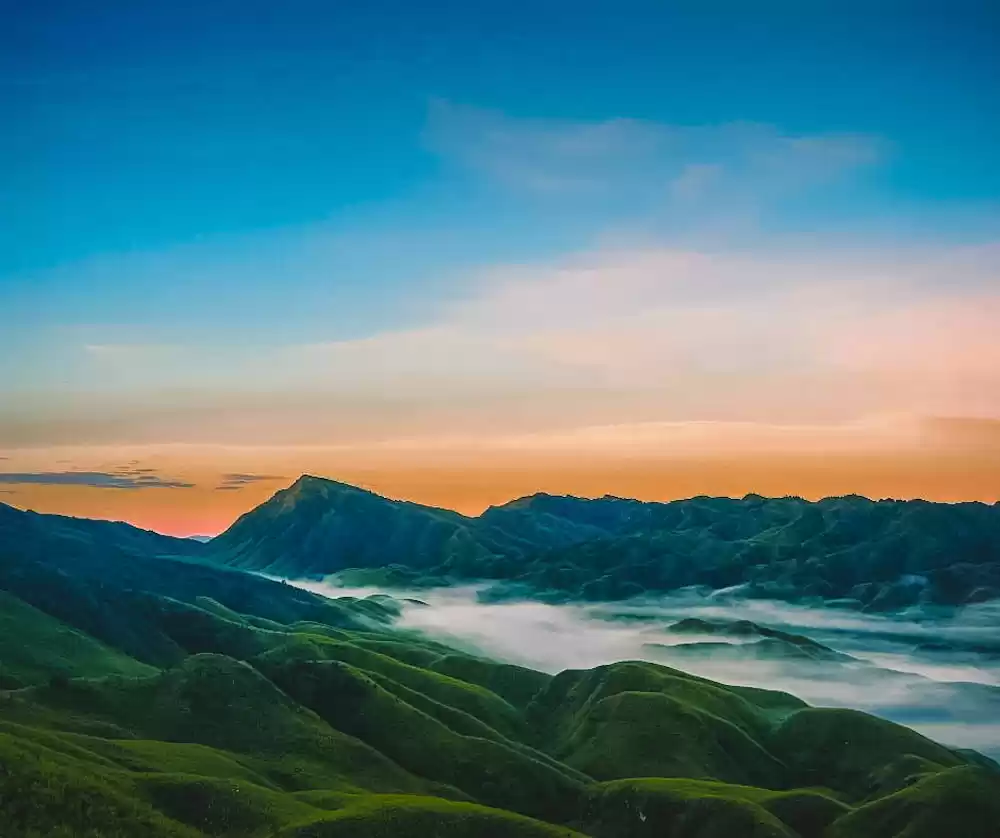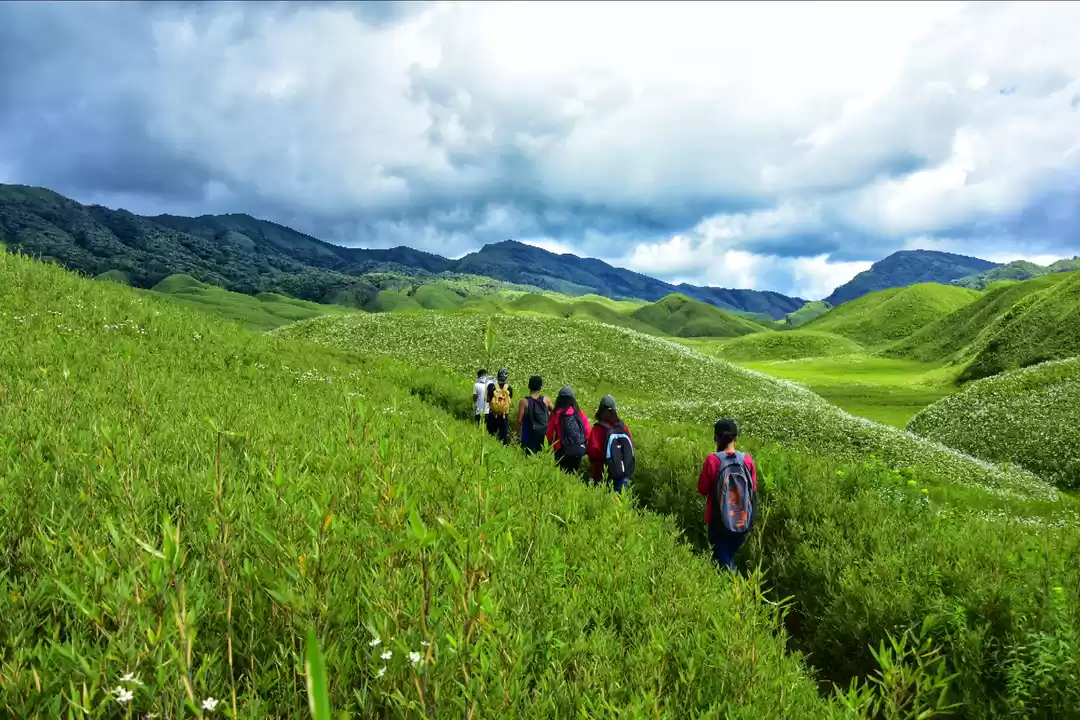Sitting on the edge of the Hill I was witnessing one of the magical sunsets of my life. As the Sun made its way to the land behind the blue mountains of Nagaland, it left us a with a sky dyed in a beautiful shade of orange and a promise to show up next morning. It reminded me of an interesting Naga folklore. As the story goes, in ancient times the Sun used to shine all the time and there was no distinction between days and nights. One day, a farmer who was tired of working every day under the blazing Sun, cursed the sun for being so harsh upon him. After hearing the farmer, the Sun decided to go on hiding forever. As a result, the entire world came under darkness. Soon the villagers realised that it's difficult to live without the presence of the Sun. So they decided to send somebody to meet the Sun and request him to come out of hiding. But no one had the courage to go and face the Sun. Finally, a rooster agreed to go and plead the Sun to show up. But even his prayers couldn't change the mind of the Sun. And the Sun sends the rooster off saying that he will never return. Seeing no chance of bringing the Sun back, the rooster decided to return back to his village. But while leaving, the rooster told the Sun that he will have to cross a dense jungle on his way back to his village and he might get attacked by wild animals on his way home. So the rooster requested the Sun to help him by showing up in the sky if he shouts in distress so that he can save himself from preying animals and reach his home safe. The sun agreed and assured the rooster that he will show up when he hears him shouting. On his way to the village, the rooster decided to test if Sun would really keep his promise and shouted at the top of his voice. Hearing the rooster shouting, the sun showed up in the sky. After that day the rooster shouts every morning to request the Sun to show up and Sun obliges to his promise.

The sun must have left a long time back but I was still sitting on that bench, letting my mind replay the events of the last two days. From arrival in Kohima to hiking down to the picturesque Dzukou valley in this short span of time we had an experience like never before.
At an alleviation of 2450 metre, Dzukou valley falls in the state of Nagaland and Manipur. However, it is more accessible from the Nagaland side and hence preferred by most of the visitors. Even from the Nagaland side, one can access the Southern side or Western side of Dzukou. While July is the best month to visit the valley, as the valley gets covered with the blooming Dzukou Lily flowers, we visited this place in the month of April.

Our journey to witness this pristine landscape started from arrival at Kohima. We arrived in Kohima a day prior to our day of trekking to Dzukou. We spent the day visiting the WW-II cemetery, a few churches and doing some shopping at the market. The war cemetery is one of the major attractions in Kohima which was built in the year 1944. It was built in memory of the soldiers who had lost their lives during at the Battle of Kohima, which is known to be one of the bloodiest battles ever fought. There was no way we could miss such a historical place! We walked through the neatly maintained garden of the cemetery, reading the names of the soldiers on stone marks and paying our homage to those heroes.

A few days before arriving at Kohima I had called brother Lumli to ask if he could guide us on our trip to Dzukou, to which he readily agreed. So we were spared from doing all the arrangements. On the morning of our trek, brother Lumli picked us up from our hotel and soon we found ourselves riding through the winding roads of Naga hills, heading towards the Vishwema village.
After one and half hours ride we finally arrived at the last motorable point in this route. From the starting point, it was a steep hike through the dense forest for almost an hour. And we had to stop frequently to catch the breath. Although there was nothing exciting to look around inside the jungle, we tried to spot the blooming rhododendron flowers. That tiring stretch ended with our arrival under the open sky. There is a rest stop at this juncture from where we had an amazing view of the surrounding mountain peaks as well as the villages in the distance. Taking shelter in the rest point we had our lunch, which brother Lumli had carried for us. A yummy packed lunch with rice, beans, fish and a spicy chutney all wrapped up inside a leaf.


All charged up after the meal, we resumed on our hike. And just as we took a turn from the rest point, we had the first view of the signature hillocks of Dzukou. This portion of the trail does not only offer a great view but also is easier to hike. Enjoying the beauty of the vast expanse of green hill slopes all around we kept heading towards our campsite.

It was around 1 PM when we arrived at our rest point for the night. It is the same place where the Dormitory is located. But we were going to pitch our own tent, for which we had to wait as drizzling had already started. As we waited for the rain to stop, brother Lumli served us cups of hot tea. It felt like a blessing on that cold rainy day.

From the campsite, we could see the unending ranges of hills, the view which attracts everyone to the Dzukou valley. Among the green hills and cane jungles, the black hillocks and burned down tree tops were easy to spot. As if they were reminding us of the wreath of forest fire which took the valley into its grip. To me, it felt like as if the contrasting colours added an extra dimension to the already beautiful Dzukou valley.

Once the rain stopped and we were freshened up, we were back on the trail. It was time to go to the bottom of the valley. The view kept getting better as we started going down the valley. Walking through the narrow trail, the only thing we could see was the hilly folds until our vision goes. At times that incredible view got the company of the sound of burbling of the stream, which courses through the valley. Together they made the hike even more mystical. We didn't even realize when we reached the cave, which was the last point of our hike. Even the rest of the afternoon went flying as we were walking around the valley, stacking stones by steam and taking tons of photographs.


The Sun was getting ready to settle for the night when we reached our campsite. With a bowl of yummy noodles in hand, I too settled myself on a bench on the edge of the Hill to capture these magical moments. Time flew by as the evening turned into dusk but I kept sitting there, letting my mind fly across the valley.
The chilling air outside brought all of us to the kitchen, where we spend the rest of the evening sitting in the warmth of the fire. Cups of hot tea and endless stories from fellow travellers kept us glued together till it was dinner time. Brother Lumli and his friends had prepared a lavish meal for us, with rice, Dal, veggies, chicken and spicy chutney.
On my way to the tent, I sat a few more minutes on that bench overlooking the valley, which was now under the blanket of darkness. Even the full moon could not help me in stealing one last view of the valley. But I remember the promise of the Sun and felt assured that we will wake up with that pristine view just outside our tent. And it would be a morning to remember.
Here are some of the things that may help you in planning your trip to Dzukou:
Self-arranged trip vs taking a guide:
If you go with a guide, the guide will make all the arrangements from accommodation to travel and food. So you're free from taking all the headache. However, it definitely comes with a price. Travelling with a group will be a good idea if you want to have the service of a guide and still want to keep the cost low. But it is also possible to visit Dzukou without taking a guide. You can carry the necessary things like tents, sleeping bag, ration etc. yourself and still complete the trek without much difficulty. As the route is properly marked you should not have much difficulty in navigating your way to the valley. It's a choice between comfort and adventure.
One night vs. two nights:
While planning a trip to Dzukou, one of the important decisions to be made is the number of nights to spend on the valley. Spending two nights will allow you to spend more time in the valley. That way you can leisurely explore the place. However, if you are short on time you can cover it in just two days and one night, but for that, you'll have to start early from Kohima. A suggested itinerary with one night stay in Dzukou can be as follows:
Day 1: Arrive in Dimapur (Dimapur has Rai and Air connectivity)
Take a taxi from Dimapur to Kohima
Spend the night in Kohima/ Kigwema village
Day 2: Leave early for Dzukou (1-hour drive and 3-4 hours trek to the dormitory)
Take a hike to the bottom of the valley and return back to the campsite
Day 3: Return early from Dzukou (takes around 2.5 - 3 hours to trek)
Spend the night in Kohima or take a taxi to Dimapur
Physical fitness required for the trip:
From Vishwema side we took around 3 hours to reach the dormitory in Dzukou and around 2 hours 15 minutes to come back. Although that doesn't sound like long hours, however, in the first part of the trek, you need to climb stairs for almost an hour, which may be stressful for your knees. That said, although you don't need to be veteran hiker, a few days of practice of climbing stairs can come handy for this trip.
When to go:
Second part of July is obviously the best season to visit the valley as you can see the blooming wild lilies all over the valley. But excessive rainfall can spoil your plan during that time. Again during the dry months, the valley won't be as green as it gets after the spring. So it's a call between playing safe or taking the chance.
How to reach:
If you want to start from Kohima, you can hire a taxi from the BOC taxi stand. It's better to leave early from Kohima. Although the actual price depends upon your negotiation skills, it can cost from 700 to 1200 INR (approx).
Alternately, you can spend the previous night in Kigwema village (15 km away from Kohima City and can be reached by shared taxi from BOC) and take a taxi from Kigwema to the starting point of the trek in Vishwema village. You can also start your trek from Zakhama village which is a bit difficult route as compared to the Vishwema route.
Once you're in the walking trail you can follow the arrow marks which will guide you to your destination.
Dimapur to Kohima takes around 3 hours by taxi and shared taxis can be hired just outside the Dimapur railway station (ticket is RS.300-Rs.350).
Accommodation: There is a dormitory (two setups actually) in Dzukou, which is managed by some local youths. If you don't carry your own tent and sleeping bag, you can stay there and also get mattresses and blankets on rent (reasonable price). If you Carry your own tent then you can pitch it in the open area next to the dormitory or near the helipad. There is also a few toilets and tank for storage of water, but those facilities are a bare minimum.
Food: Next to the dormitory there are set up for kitchens, which can be used by the trekkers to cook. You can carry your own ration and cook. There is also a common kitchen from where you can buy meals, but you need to inform them in advance. There is a small shop where you can packet of noodles, biscuits etc. But it's better to carry drinking water for your entire period of stay.
Final thoughts: With endless green hillocks and a valley full of wildflowers, Dzukou allures travel enthusiasts from all over the globe. I too fell for those beautiful promises and I’m happy that I took that trip. But one of the things that concern me is the disposal of plastics in the trail and the valley. We brought back all the plastics we used and some extra too. And if you ever take this trip I request you to do the same.
Happy travelling!

